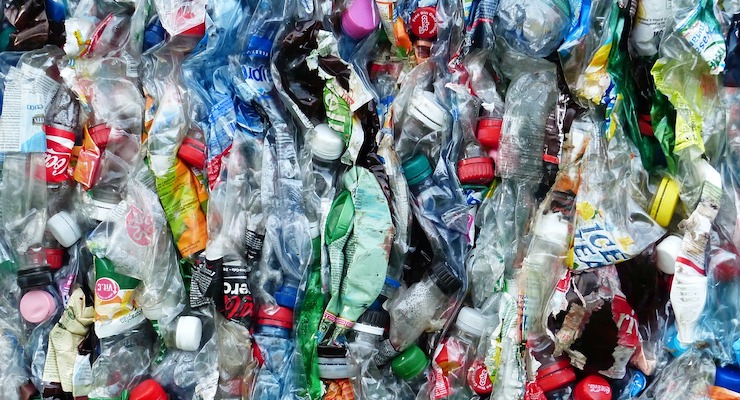Un nuovo tipo di plastica veramente riciclabile / A new type of truly recyclable plastic
Un nuovo tipo di plastica veramente riciclabile / A new type of truly recyclable plastic
Segnalato dal Dott. Giuseppe Cotellessa / Reported by Dr. Giuseppe Cotellessa

La situazione sul fronte dell’inquinamento da plastica è davvero critica. Basti pensare che le microplastiche sono presenti ormai ovunque, dal cibo, agli oceani e la terraferma, fin sulle nevi alpine. Un vero e proprio allarme per l’ambiente e la nostra salute, tanto che il Parlamento europeo ha appena dichiarato di voler vietare la vendita della plastica monouso dal 2021 e cercare così di contrastare l’inquinamento di spiagge, mari e oceani. Nel frattempo, la comunità scientifica si sta impegnando ormai da anni per riuscire a rendere la plastica sostenibile e completamente riciclabile. E oggi, a compiere un importante passo in questa direzione sono stati i ricercatori della Colorado State University che hanno appena messo a punto un nuovo tipo di plastica che può essere riutilizzata più e più volte. Il loro studio è stato pubblicato su Nature Chemistry.
La nuova plastica
Per creare il nuovo materiale, i ricercatori hanno ottimizzato tramite processi chimici molto complessi un tipo di vitrimero, una classe di materie plastiche che deriva da polimeri termoindurenti. Nel dettaglio gli scienziati hanno realizzato dei polimeri tenuti insieme da speciali legami chimici (noti come “dynamic covalent diketoenamine bonds”), che richiedono meno energia per rompersi rispetto a quelli della plastica tradizionale. Di conseguenza questi legami consentono al nuovo materiale di essere scomposto nelle sue materie prime (da polimeri a monomeri) abbastanza facilmente: basta una soluzione di acqua e un acido forte a temperatura ambiente. Inoltre, il nuovo metodo è efficace anche nel separare la plastica dagli additivi, come coloranti e ritardati di fiamma, che solitamente rendono difficile il processo di riciclo in un prodotto finale desiderabile e della stessa qualità dell’originale.
Riciclaggio chimico
Finora, ricorda Science News, i metodi di riciclaggio chimico, processo che mira a spezzare le molecole base (polimeri) e ottenere le materie prime (monomeri) di partenza, producono pellet (piccoli granuli) di resina plastica, prodotti di basso valore e scarsa qualità. Ma con questo nuovo processo la plastica che si ricicla è molto simile all’originale e può essere inoltre riutilizzata più volte. Resta da capire, concludono i ricercatori, se i produttori potrebbero effettivamente utilizzare il nuovo materiale e se gli impianti di riciclaggio la accetteranno nel prossimo futuro.
“I nostri risultati dimostrano la facilità con cui il nuovo materiale può essere riciclato e riutilizzato, senza perdere la qualità, e aprono la strada alla progettazione di nuovi polimeri sostenibili che hanno un impatto ambientale minimo”, concludono i ricercatori
ENGLISH
Some researchers have developed a new type of plastic that, thanks to a special chemical bond, can be reused over and over again.
The situation on the plastic pollution front is really critical. Suffice it to say that microplastics are now present everywhere, from food, to the oceans and the land, down to the alpine snows. A real alarm for the environment and our health, so much so that the European Parliament has just declared its intention to prohibit the sale of disposable plastic from 2021 and thus seek to counteract the pollution of beaches, seas and oceans. Meanwhile, the scientific community has been working for years to make sustainable and completely recyclable plastic. And today, to take an important step in this direction were the researchers at Colorado State University who have just developed a new type of plastic that can be reused over and over again. Their study was published in Nature Chemistry.
The new plastic
To create the new material, the researchers optimized a type of vitrimer, a class of plastics that comes from thermosetting polymers, using very complex chemical processes. In detail, scientists have made polymers held together by special chemical bonds (known as "dynamic covalent diketoenamine bonds"), which require less energy to break than those of traditional plastic. Consequently, these bonds allow the new material to be broken down into its raw materials (from polymers to monomers) quite easily: just a solution of water and a strong acid at room temperature. Furthermore, the new method is also effective in separating plastic from additives, such as dyes and flame retardants, which usually make the recycling process difficult in a desirable final product of the same quality as the original.
Chemical recycling
So far, Science News recalls, the methods of chemical recycling, a process that aims to break up the basic molecules (polymers) and obtain the starting materials (monomers), produce pellets (small granules) of plastic resin, low-value and low-value products quality. But with this new process, the plastic that is recycled is very similar to the original and can also be reused several times. It remains to be understood, the researchers conclude, whether the producers could actually use the new material and whether the recycling facilities will accept it in the near future.
"Our results demonstrate the ease with which the new material can be recycled and reused, without losing quality, and open the way for the design of new sustainable polymers that have a minimal environmental impact," the researchers conclude
Da:



Commenti
Posta un commento